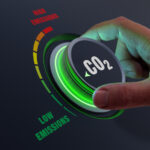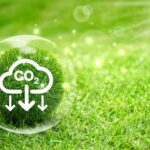Teva Pharmaceuticals met their greenhouse gas reduction target before their goal of 2020 and has charted a path forward to improving their sustainability.
In 2019, the pharmaceutical company retired their previously set environmental goals because they had either achieved them or they were no longer applicable. The new interim greenhouse gas goal targeted a 10% absolute reduction in Scope 1 and 2 emissions between 2017 and the end of 2020, and this goal was achieved in 2019 when the company reduced greenhouse gas emissions by 17.2%. Since 2018, Teva has increased their renewable energy consumption by 9.4% and decreased total energy consumption by 5.7%.
Teva adopted its Environment, Health and Safety (EHS) system across 93% of their facilities and tracks data associated with each facility. In their 2019 Environmental, Social and Governance Report, the company disclosed that they received a B score from the CDP and plans to try to raise their score moving forward by focusing on establishing emissions targets that go beyond five years and by increasing their engagement with their value chain on climate issues. In 2020 they set a goal to:
- Establish next-generation environmental sustainability targets to guide our future efforts.
- Continue advancing work to implement the Common Antibiotic Manufacturing Framework of the AMR Industry Alliance across the Teva network.
- Continue to identify opportunities to enhance our responsible use of natural resources, such as water and energy, and to reduce waste.
“For Teva, ESG means working to improve the health of our patients and communities and running an accountable business,” Kåre Schultz, President & CEO of Teva, said in a statement. “This report demonstrates our actions to increase access to quality medicines, support our employees, protect the environment and enhance compliance, while keeping patients at the heart of what we do.”
To improve their global efficiency, Teva has implemented projects such as a biomass builder at their site in Goa, India, which allowed them to avoid 381 metric tons of CO2 and reduce running costs by $113,000. In Ulm, Germany, a state-of-the-art facility is being developed that includes a facade made of electrochromic glass for control of light and heat and uses 100% renewable energy.



